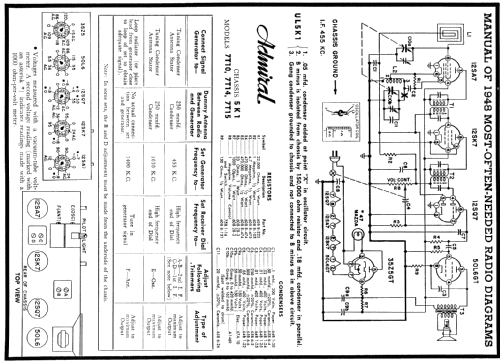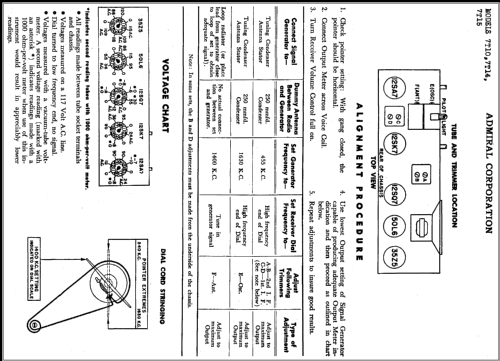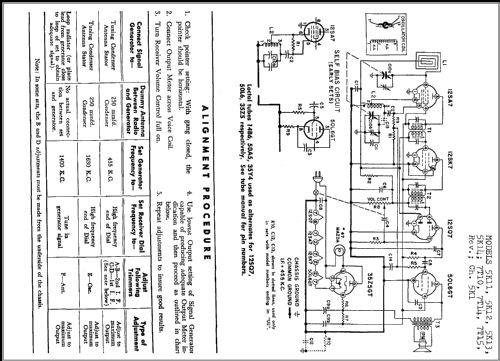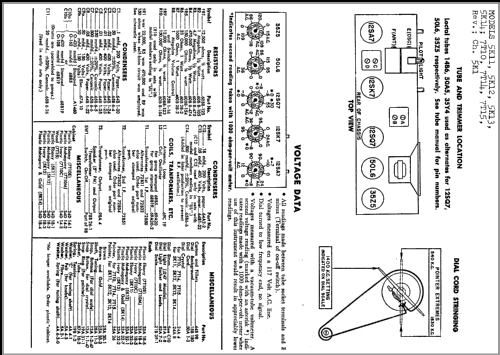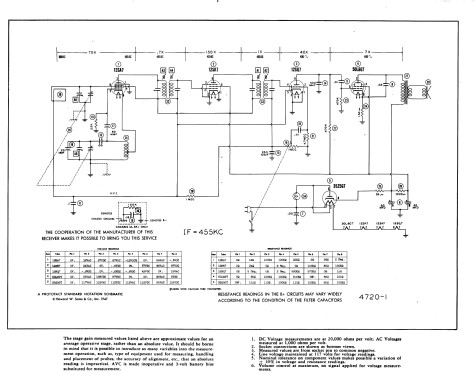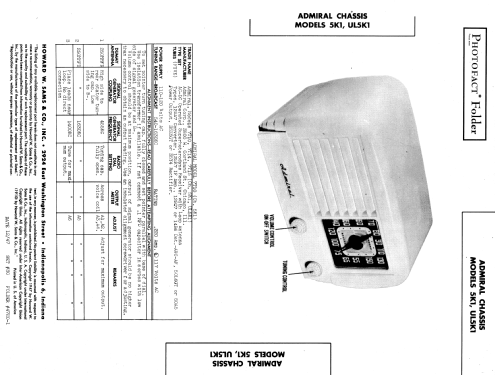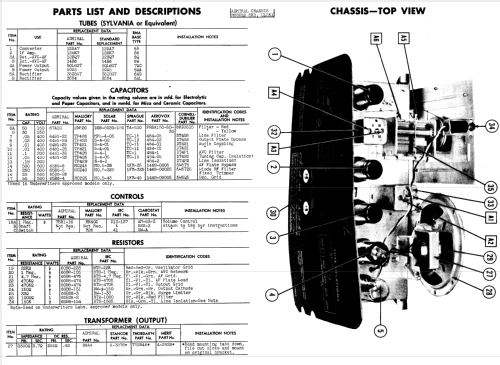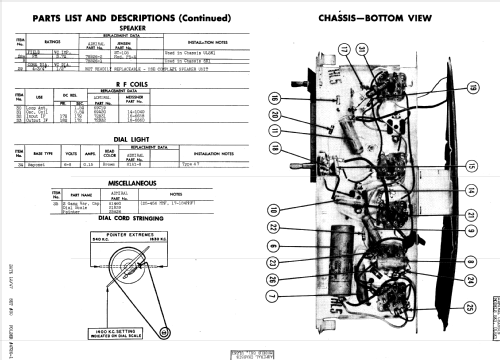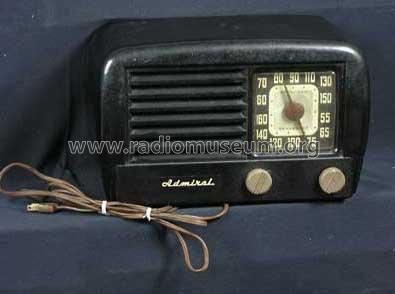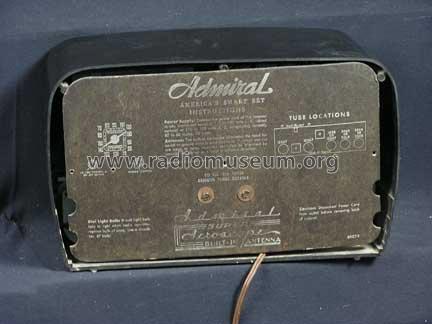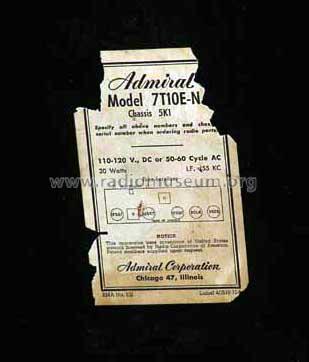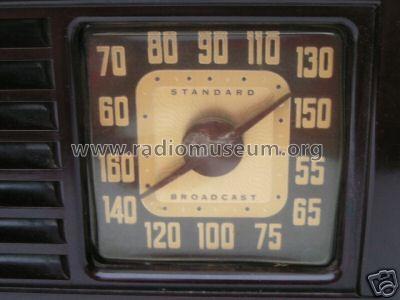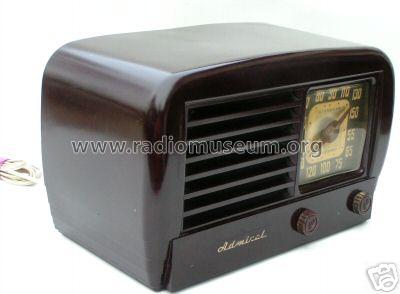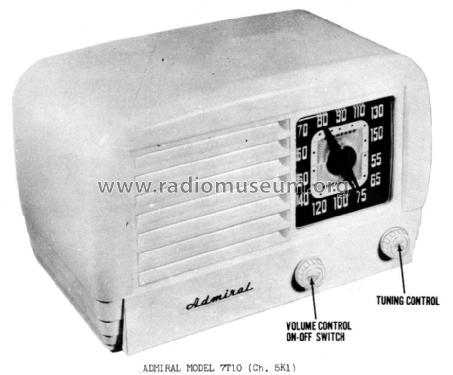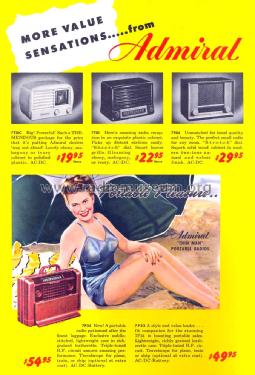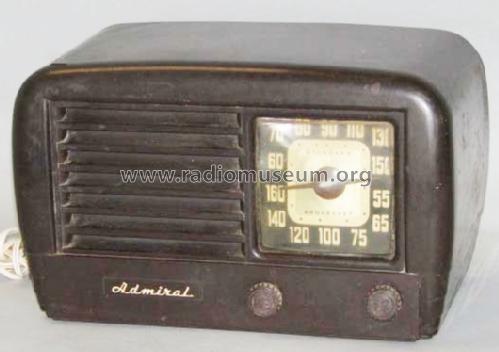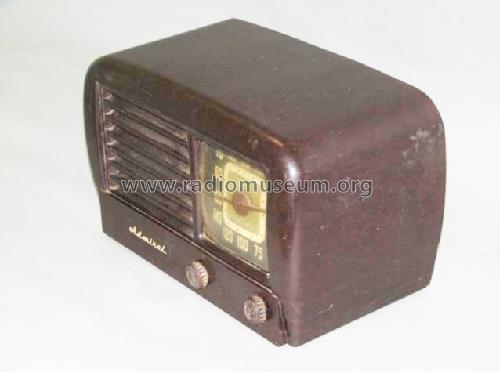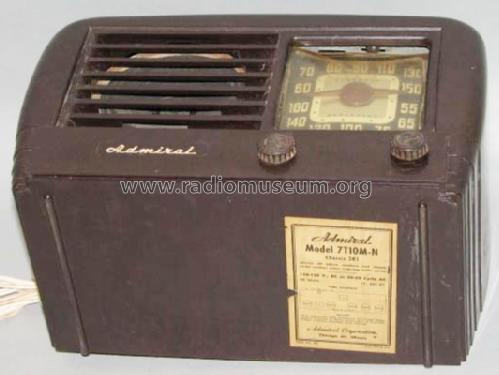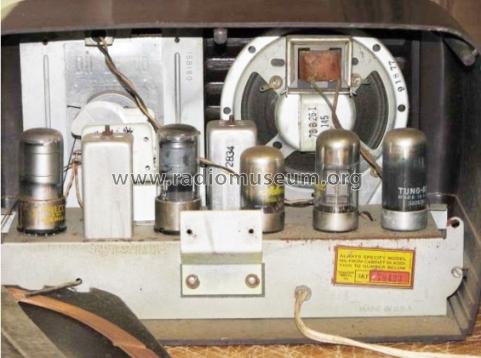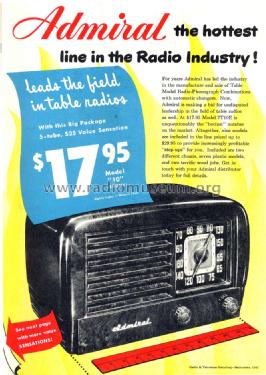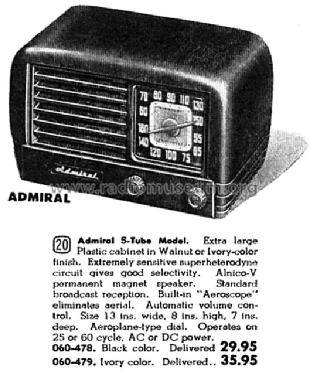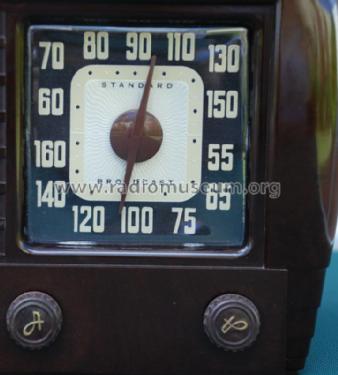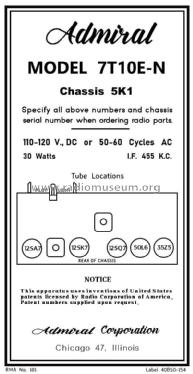7T10 (-N) Ch= 5K1 (UL5K1) Octal and Loctal
Admiral (brand) Continental Radio & Television Co.; Chicago, IL
- Land
- USA
- Hersteller / Marke
- Admiral (brand) Continental Radio & Television Co.; Chicago, IL
- Jahr
- 1947/1948

- Kategorie
- Rundfunkempfänger (Radio - oder Tuner nach WW2)
- Radiomuseum.org ID
- 31388
-
- anderer Name: Continental Radio & TV
Klicken Sie auf den Schaltplanausschnitt, um diesen kostenlos als Dokument anzufordern.
- Anzahl Röhren
- 5
- Hauptprinzip
- Superhet allgemein; ZF/IF 455 kHz
- Anzahl Kreise
- 6 Kreis(e) AM
- Wellenbereiche
- Mittelwelle, keine anderen.
- Betriebsart / Volt
- Allstromgerät / 117 Volt
- Lautsprecher
- Dynamischer LS, keine Erregerspule (permanentdynamisch) / Ø 5 inch = 12.7 cm
- Material
- Bakelit (Pressstoff)
- von Radiomuseum.org
- Modell: 7T10 Ch= 5K1 [Octal and Loctal] - Admiral brand Continental
- Form
- Tischgerät ohne Drucktasten, bis 35 cm Breite (Kleingerät, meist dekorativ. Nur für Netzbetrieb, doch Transportgriff möglich).
- Abmessungen (BHT)
- 13 x 8 x 7 inch / 330 x 203 x 178 mm
- Bemerkung
-
Built-in loop antenna. There is also a variant which employs Octall tubes only.
Colors:
- 7T10E = ebony / black
- 7T10M = mahogany
- 7T10C = ivory
- ebony w/ ivory louver (mentioned in Rider's 17)
- ivory w/ ebony louver (mentioned in Rider's 17)
The difference between models with and without -N suffix is currently unknown.
- Nettogewicht
- 6 lb 8 oz (6.5 lb) / 2.951 kg
- Originalpreis
- 19.95 $
- Datenherkunft extern
- Ernst Erb
- Datenherkunft
- Collector's Guide to Antique Radios 4. Edition
- Schaltungsnachweis
- Rider's Perpetual, Volume 17 = 1948 and before
- Literaturnachweis
- The Radio Collector's Directory and Price Guide 1921 - 1965
- Literatur/Schema (2)
- Radio Retailing (Radio & Television R.) (Jun 1947 p.20 and Sep 1947 p.19)
- Literatur/Schema (3)
- Rider's Perpetual, Volume 22 = covering 1951
- Literatur/Schema (4)
- Photofact Folder, Howard W. SAMS (Set 30, Date 12/47, Folder 4720-1)
- Weitere Modelle
-
Hier finden Sie 3229 Modelle, davon 1333 mit Bildern und 2599 mit Schaltbildern.
Alle gelisteten Radios usw. von Admiral (brand) Continental Radio & Television Co.; Chicago, IL
Sammlungen
Das Modell 7T10 (-N) befindet sich in den Sammlungen folgender Mitglieder.
Forumsbeiträge zum Modell: Admiral brand: 7T10 Ch= 5K1
Threads: 1 | Posts: 2
This is my first post, and I'm a beginner. I got this radio out of a barn loft and I'm guessing it hasn't been used in 30 to 40 years. I opened it up and saw that the speaker cone had been eaten out and a blown capacitor was hanging loose. I decided to restore this radio. I replaced all of the paper capacitors with new modern capacitors. I found a used speaker on ebay which was the same model. I just got finished with it and turned it on and to my joy it warmed up quickly and I started receiveing stations right away. My question is, is it normal in an old am radio to get signal bleeds of other stations trying to come in on the same frequency? I live about 35 miles from a big city and get some of the stations very strong, but with other stations being lightly heard trying to come in on that frequency also. I've picked up stations in other states also, with the same problem. I have not done anything else to the radio other than clean the tuner with contact cleaner. It was dirty and a little corroded. When I rotate the dial, it moves freely after using the contact cleaner. The sound is great and nice volume without distortion.
Tim Dees, 07.Mar.12
